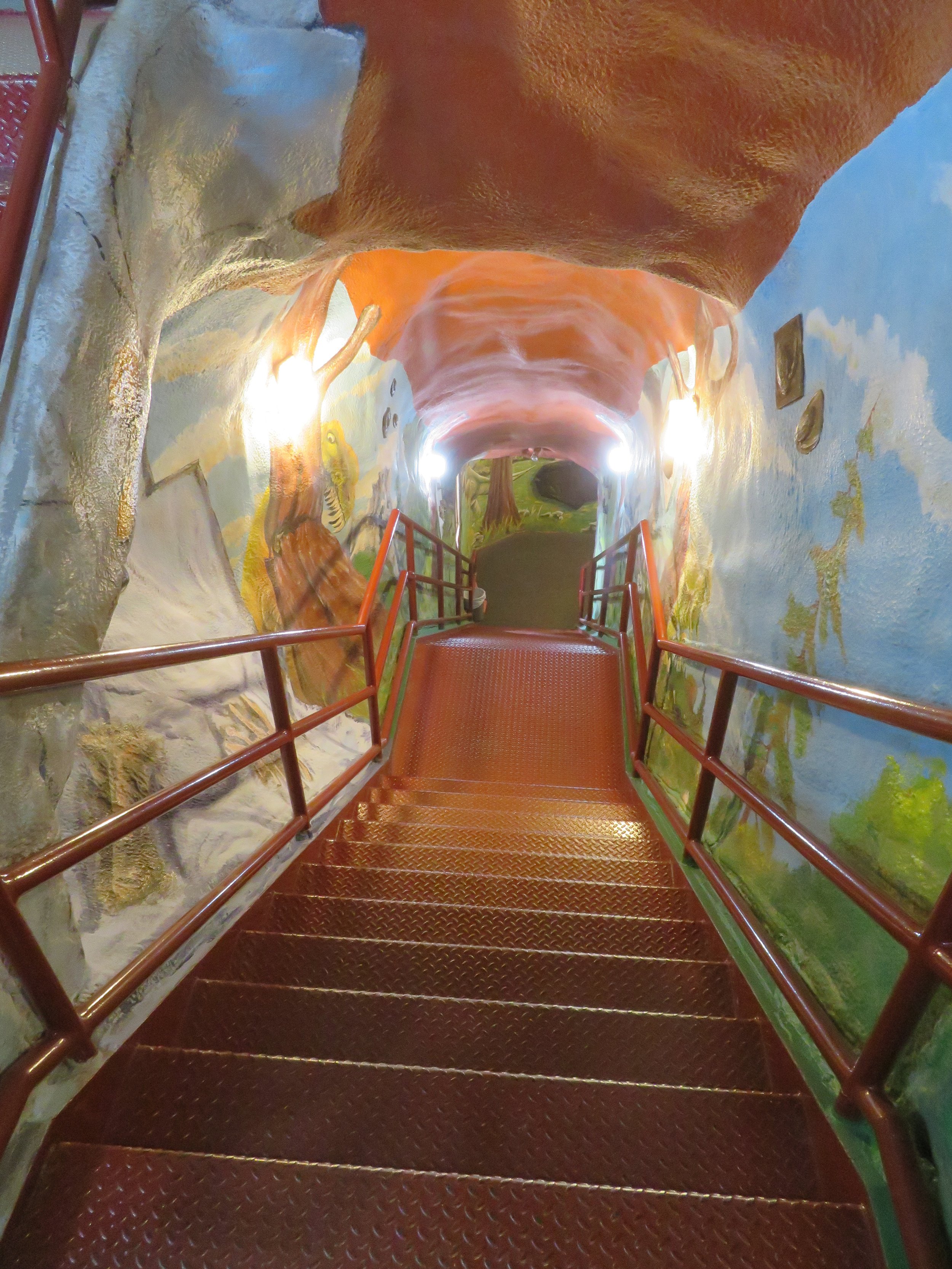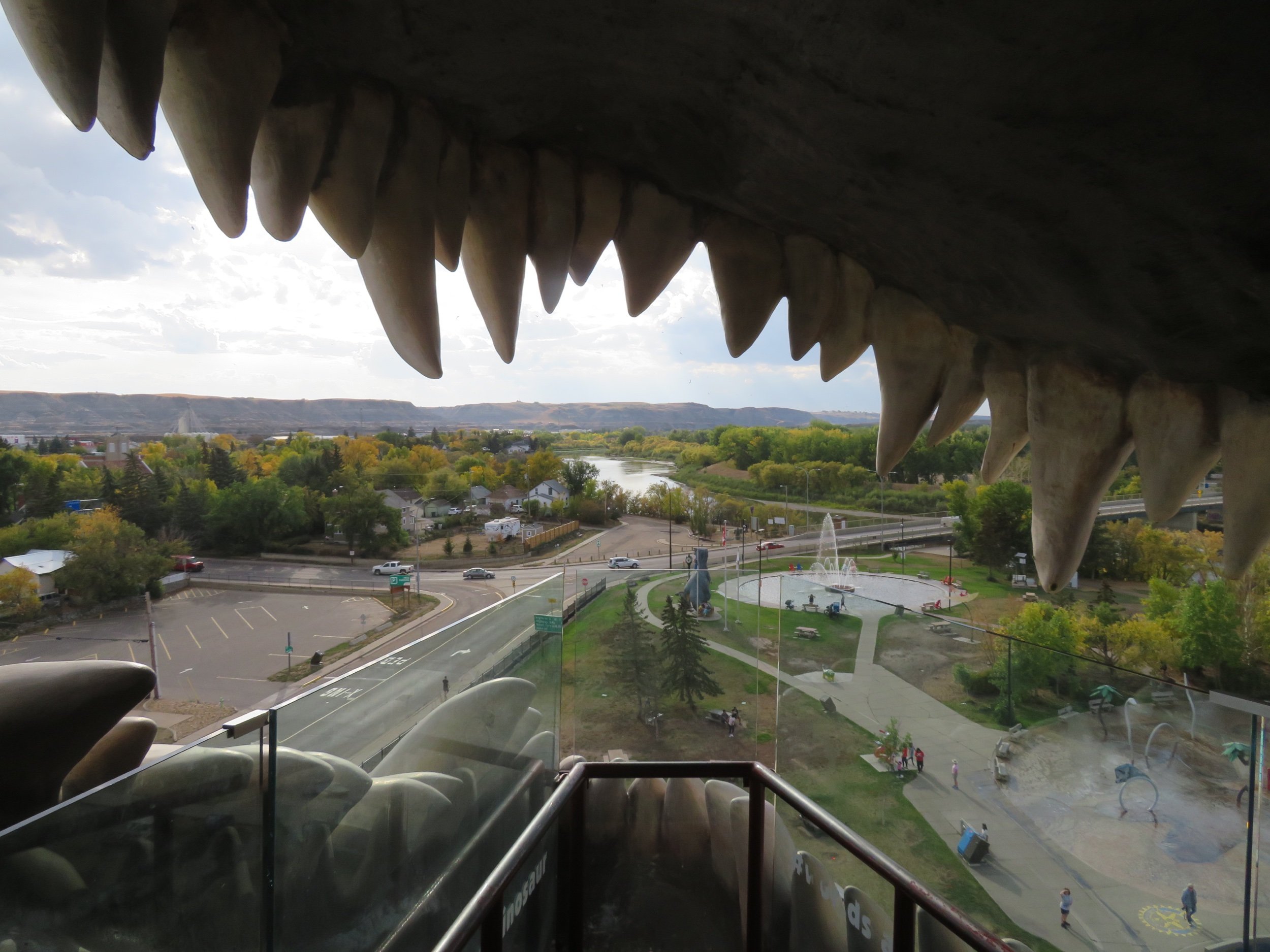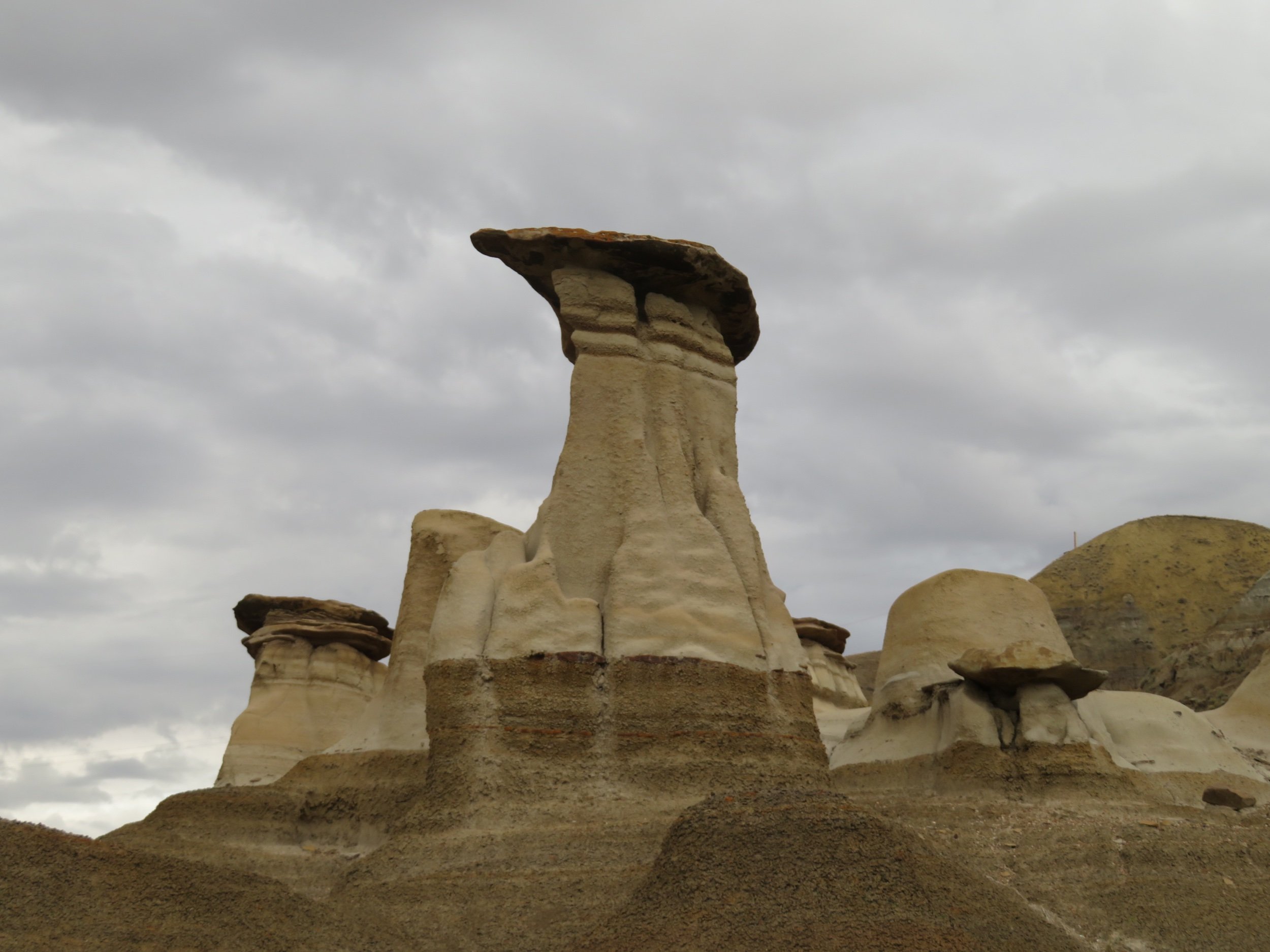The Dinosaurs of Drumheller
/Our original plan was to continue south from Banff to Waterton Lakes National Park on the U.S./Canadian border. As usual, we got a little sidetracked. When I was doing research previously on the World’s Largest Beaver in Beaverlodge, Alberta, I ran across a reference to the World’s Largest Dinosaur… in Drumheller about 160 miles east of Banff via Calgary. A little more research and we discovered that the world class Royal Tyrrell Museum of Palaeontology and research facility was also in Drumheller. Really… how could we pass up such an opportunity? We couldn’t, so we headed east.
Though we imagine Calgary has lots to offer, we only stopped long enough to replenish the larder then continued on to Drumheller. As we headed east, the land flattened out and we left the majestic Rockies in the rear view mirror. We were on the prairies again… flatlands, farmlands, hay rolls laying in fields ready for winter.
Rather abruptly, the land changed and we were in the ‘badlands’, comparable to the badlands we’d experienced in South Dakota and Utah.
We were in Drumheller.
From the moment you enter the town, you realize dinosaurs are the prevalent theme. There are colorful dinos of every shape, size, and color on every street corner, in the squares, on signs and even on the roofs.
It was mid-afternoon and we drove directly to the Royal Tyrrell Museum a bit northwest of town, situated most appropriately just off the North Dinosaur Trail. The museum was opened in 1985 and dubbed a ‘Royal’ museum by Queen Elizabeth II in 1990.
We purchased our tickets ($14/pp), received our map layout of the museum and set out to explore. I might add that we’re not usually into dinosaurs or fossils, but this museum had such rave reviews, we thought it was worth a visit. What a gem!
From Alberta’s Dino Fact Sheet, we learned lots. Named after Joseph B. Tyrrell who in 1884 “stumbled upon a 70-million-year-old dinosaur skull, the first of its species ever found, just a few kilometers from where the Royal Tyrrell Museum now stands.”“Tyrrell’s find was named Albertosaurus sarcophagus(“flesh-eating lizard from Alberta”) in 1905 by American Museum of Natural History palaeontologist Henry Fairfield Osborn.”
The exhibits were fascinating and compelling. Exhibit after exhibit dazzled us. The 132,500 sq ft (12,300 m2) facility is well laid out and organized according to paleontological eras. We felt like we were walking through time.
Most of Alberta’s dinosaur fossils are attributed to the Cretaceous Period (66-81 million years ago). Between 60-70 different types of dinosaurs have been found in the Alberta area with the largest concentration found in Dinosaur Provincial Park. Below, an allosaurus.
We saw a T-Rex, one of the largest dinosaurs and Suncor nodosaur, the oldest dinosaur found in Alberta. We saw small dinos, armored dinos and horned dinos, plant eaters and omnivores, land dinos, flying dinos and marine dinos. A saber-tooth cat taking down a mammoth. It was nearly overwhelming and a visitor could spend days here to take it all in.
Since these guys were life size, it was a lesson in humility as well as wonder walking among them. Take a look at the size of the camelosaurus right hind limb vs. David who is ~ 6’1.”
Or the very toothy mouth of a dunkleostenus, a fish that lived ~365 million years or so… give or take a few million.
We watched through a plate glass window as workers in the preparation lab meticulously labored to remove debris from excavated bones that had not yet been studied or displayed. Some bones require years for preparation and study.
Back from prehistoric to present day in Drumheller, we were hungry and stopped for a late lunch/early dinner in town at the Vintage Tap Room before heading to visit Tyra, the world’s largest dinosaur. Towering above the town at 86’ (26m) tall and 151’ (46m) long, Tyra is hard to miss.
With a steel inner structure and fiberglass molded and painted ‘skin’, Tyra is 4.5 times bigger than an actual T-Rex was. Weighing in at 65 tons, we’re talking one big dino!
We paid our $5/pp admission fee at the Tyra gift shop and began the 106-step climb into the massive dinosaur’s innards.
We exited at the top of the stairs into Tyra’s gaping maw. The view through the T-Rex’s teeth was interesting to say the least. Having us over for lunch took on a whole new meaning.
A full day by the time we exited the dinosaur and we’d yet to find a campground. Luckily, the Hoodoo RV park just south of town had space available ($29/night) and it was close to Drumheller’s Hoodoo Trail for the next morning.
We’ ve seen hoodoos before, but they’re such odd and unusual formations, we thought it would be a great walk first thing in the morning and it was.
A trail led around the hoodoos which were protected by a a less than effective fence if someone wanted to climb over. We wandered along the path. They’re so surreal… like a troop of giant mushrooms.
Unfortunately, the trail was quite short and we felt uncomfortable venturing further from the designated area for fear we’d damage something,, so we were back in the car and heading south again.
Next time, Vulcan… the Official StarTrek Capital of Canada. Live long and prosper! Join us there!






































